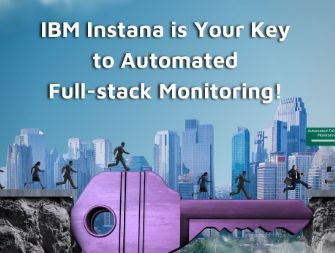August 2025 – Austin, TX
Once upon a time, provisioning IT infrastructure meant a lot of coffee, long nights in cold server rooms, and a heavy reliance on “Bob from Networking” knowing which cable went where. Today, thanks to Infrastructure as Code (IaC), those manual headaches are replaced by lines of code that can spin up, configure, and tear down entire environments—on demand, at scale, and without Bob’s memory being the single point of failure.
Why IaC Is a Game Changer
In a world of cloud-first, hybrid, and multi-cloud strategies, speed and consistency are everything. Gartner predicts that by 2027, 80% of infrastructure provisioning will be fully automated using IaC (Gartner, 2025).
IaC brings software development principles to infrastructure management:
Version Control: Infrastructure configurations are stored in repositories like Git, making them auditable and rollback-friendly.
Repeatability: Deploy the same environment every time—no surprises.
Scalability: Spin up hundreds of servers or containers in minutes.
How IaC Works
IaC tools use declarative or imperative code to define desired infrastructure states:
Declarative: “This is what I want—figure out how to build it.” (e.g., Terraform, AWS CloudFormation)
Imperative: “Here’s exactly how to build it, step-by-step.” (e.g., Ansible, Chef)
These scripts handle provisioning for compute, storage, networking, and even security configurations.
Business Impact
Speed to Market: DevOps teams can provision test and production environments in minutes rather than weeks.
Cost Efficiency: Automatically tear down unused resources to avoid cloud bill shock.
Security Compliance: Embed security baselines directly into IaC templates to enforce standards automatically.
A 2025 Forrester report found that companies adopting IaC reduce provisioning times by up to 90% and cut configuration drift incidents in half (Forrester, 2025).
Common Use Cases
Multi-Cloud Deployments: Consistent configurations across AWS, Azure, and GCP.
Disaster Recovery: Rebuild environments from scratch in minutes after a major outage.
Testing & QA: Quickly clone production environments for realistic testing without disrupting operations.
Challenges in Adoption
Learning Curve: Teams must develop coding skills in addition to infrastructure knowledge.
Tool Sprawl: Multiple IaC tools across teams can lead to inconsistency.
Security Risks: Poorly written scripts can propagate vulnerabilities across all environments.
The Future of IaC
Expect IaC to integrate even more deeply with policy-as-code and compliance-as-code, ensuring that every deployment automatically meets governance and security requirements. AI will begin to suggest optimizations, predict configuration issues, and generate infrastructure templates based on business needs.
Closing Thought
Infrastructure as Code turns infrastructure into a software problem—and in the process, gives organizations speed, consistency, and control that manual methods could never match. In the age of cloud agility, IaC isn’t just an advantage—it’s table stakes.
References (APA Style)
Gartner. (2025). Forecast: Infrastructure Automation Trends 2025. Retrieved from https://www.gartner.com
Forrester. (2025). The Business Value of Infrastructure as Code. Retrieved from https://www.forrester.com
HashiCorp. (2025). Terraform Overview. Retrieved from https://www.hashicorp.com
Samantha Cohen – Co-Editor
Dallas, Texas
Peter Jonathan Wilcheck – Co-Editor
Miami, Florida
Jean Francois Gauthier – InfoSec News Contributor
Montreal, Quebec
Post Disclaimer
The information provided in our posts or blogs are for educational and informative purposes only. We do not guarantee the accuracy, completeness or suitability of the information. We do not provide financial or investment advice. Readers should always seek professional advice before making any financial or investment decisions based on the information provided in our content. We will not be held responsible for any losses, damages or consequences that may arise from relying on the information provided in our content.



